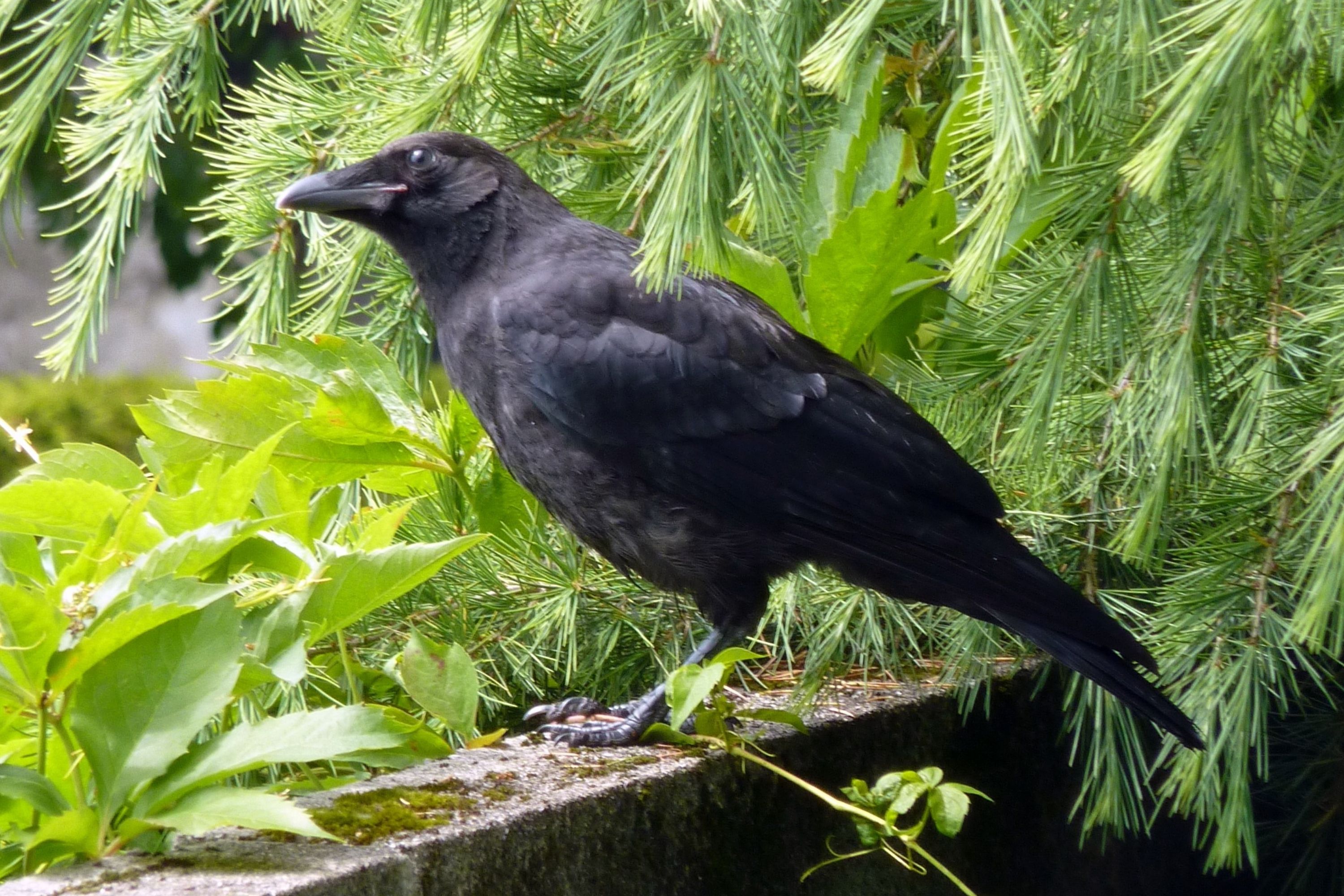Palm crow
(Corvus palmarum)

Description
The palm crow (Corvus palmarum) is a relatively small corvid that occurs on the Caribbean island of Hispaniola (Haiti and the Dominican Republic) and Cuba, where it was formerly very frequent, but is now reduced in population. The Cuban subspecies is slightly smaller, and is usually separated as a subspecies (Corvus palmarum minutus); the Hispaniolan subspecies' trinomial is Corvus palmarum palmarum (the nominate subspecies). Both subspecies are usually now given the respective common names of Hispaniolan palm crow and Cuban palm crow to distinguish them. Despite being sympatric with the white-necked crow (Corvus leucognaphalus) on Hispaniola, it appears to be more closely related to the fish crow (C. ossifragus) of the East Coast of the United States, as well as two smaller species, the Tamaulipas crow (C. imparatus) and Sinaloan crow (C. sinaloae) of Mexico, than the white-necked crow, which is more related to the Cuban crow (Corvus nasicus) and the Jamaican crow (Corvus jamaicensis), the other two Caribbean corvids. The local name for the palm crow is cao in the Dominican Republic (where it is locally common, mainly in mountain pine forests and also around the area of Lake Enriquillo), which is onomatopoeic of the simple and repetitive call of this bird. Corvus is a widely distributed genus of medium-sized to large birds in the family Corvidae. It includes species commonly known as crows, ravens and rooks. The species commonly encountered in Europe are the carrion crow, the hooded crow, the common raven, the jackdaw and the rook; those discovered later were named "crow" or "raven" chiefly on the basis of their size, crows generally being smaller. The genus name is Latin for "crow". The 45 or so members of this genus occur on all temperate continents except South America, and several islands. The Corvus genus makes up a third of the species in the family Corvidae. The members appear to have evolved in Asia from the corvid stock, which had evolved in Australia. The collective name for a group of crows is a "flock" or a "murder". Recent research has found some crow species capable of not only tool use, but also tool construction. Crows are now considered to be among the world's most intelligent animals with an encephalization quotient equal to that of many non-human primates.
Taxonomic tree:







